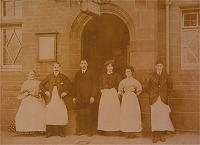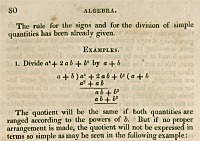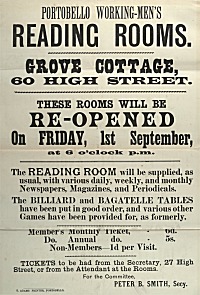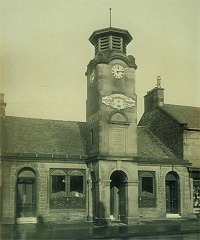Contents ![]() | The earliest public libraries
| The earliest public libraries ![]() | Learning organisations
| Learning organisations ![]()

The new learning - opportunities for all
The impetus for change at the end of the 19th century was immense. Technology and society were changing as never before, at a rate never experienced before. The pressures this exerted led to new things in society and culture. Opportunities opened for more people than had hitherto been possible.
The developments in the field of library provision were just one side of the new social trends. In most places someone with just a small amount of spare cash could access reasonable amounts of up-to-date publications on many subjects. Many libraries increased the proportion of stock that covered science and technology in many different fields. However, much of the new knowledge was inaccessible to many readers: it was seldom presented in a way that made it easy to learn. There was a growing hunger for instruction.

Scotland, and particularly the cities of Glasgow and Edinburgh and the areas about them, was well placed to respond to the pressure. We covered three of the solutions in this Project. They developed in sequence throughout the 19th century. Their legacy is with us today in institutions as diverse as some universities and the halls and institutes scattered around the region in communities large and small.
The first to appear was aimed at the artisan or workman with a skilled trade. They were faced with new technologies that had developed recently and were not on school curricula. To keep up with progress the artisan needed new knowledge. In 1821 Edinburgh pioneered the first of a new kind of school. It operated in the evening and at weekends, providing skilled lecturers and opportunities for what is now called life-long learning. It was the Edinburgh School of Arts, now incorporated in Heriot-Watt University.

The first wave of schools of art, or mechanics institutes as they were commonly known had a vigorous flowering. However, the movement generally fell into a kind of decay. Many institutes lost the aims of their founders and tended to become comfortable 'clubs' providing entertainment and recreation for the middle classes. They were replaced later in the century by another movement that retained its vigour into the 20th century, the working men's institutes. These differed from the schools in that they were founded and run by working men for working men, much to the approval of Samuel Smiles.

Another more diverse initiative grew on the back of the near universal temperance movement of the second half of the 19th century. The Gothenburg or Trust Public Houses adapted a Swedish idea to the great profit of many communities in Lothian and Fife. Some of its parts are still operational today.
In this section:
Schools of arts and the mechanics institutes | Working Men's Institutes | Trust public houses
Contents ![]() | The earliest public libraries
| The earliest public libraries ![]() | Learning organisations
| Learning organisations ![]()